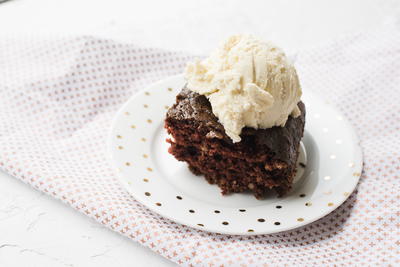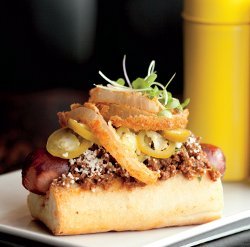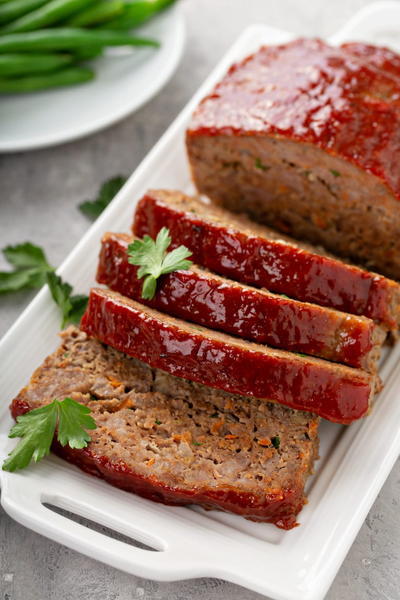Roast Goose with Apple and Prune Stuffing
Ingredients
- 1 goose, about 5kg
- 700g apples (not too sweet)
- 200g prunes
- 50g sultanas
- breadcrumbs (about 2 handfuls!)
- 250ml water
- 250ml stock
- 150ml red wine
- 60ml cream
- cornflour
Instructions
The night before, stone prunes and soak them in black tea (or, if you're adventurous, Guinness). Four hours before dinner, set oven at 170C (325F, Gas 3). Remove suet from inside of goose, wrap it in cling-film and put it in the fridge. Tomorrow you can render it down, but there are many more urgent things to do today. Rub salt and pepper inside and outside the goose. Put the giblets/neck in a saucepan of cold water. Slice the apples and prunes, and mix them with the sultanas and breadcrumbs. A pinch of cardamom powder makes an interesting extra, but is not essential. Stuff the goose with this mix, and skewer the opening (two short skewers crosswise works well, but remember to keep the handle ends of the skewers at the top). Place the goose on a rack (or, even better, on a cradle) in a large, deep roasting pan, and cook it for about 3 hours at 170C, keeping a little water in the pan - check every half-hour and add water if necessary. Now boil up the giblets for stock, along with onion and bay leaves. After about two hours, you should be checking whether the juices run clear; when they first begin to lose their pinkness, put the temperature up to 220C (425F, Gas 7) and douse the bird with cold water. Give it 20 mins at the high temperature, then put the goose aside, with the rack/cradle on another dish to catch more drippings. Remove the fat from the roasting juices, and add the stock, wine and cream to make up a gravy. Reduce the liquid, stiffening it with cornflour only if necessary (mix the cornflour into little balls of butter, and drop in a ball at a time until you have the right consistency), and seasoning to taste. Marjoram is a nice herb to add here. If your goose is bigger: Allow for an extra 30 mins per kilogram, but also for further over-run. Ease the apple/prune/breadcrumb amounts upwards, but leave other quantities the same. Before you stuff it, check that the goose will fit in the oven: snip the legs if necessary - trim the parson's nose if desperate. To accompany: You must have "sukkerbrunede poteter" - the little caramelised potatoes so beloved of all Scandinavians, but particularly the Norwegians. Boil up some small potatoes - not too floury a variety - until they are cooked but not going soft. Drain them and allow them to cool to hand-hot. If the surface of the potatoes is still unbroken underskin, draw a fork over them a few times to scratch the skin. Heat butter and brown sugar in a skillet until frothy, and cook the potatoes in this until they are coated. Also, have mashed potatoes, a green veg (crunchy mangetout goes very well), a root veg such as turnip or swede, and some pickled red cabbage (drained, with apple puree stirred into it). Cranberry sauce or rowan jelly will go well, as (surprisingly) will a little horseradish sauce. Next day: Strip remaining meat off the goose - it's great for a Parmentier (a sort of "gooseherd's pie") or sandwiches - and boil up the carcass for more stock. Heat up the fat which was skimmed from the roasting juices and strain it into a jar: this is "dark" goose-fat. In a clean saucepan, heat the suet slowly, and strain the liquid fat into another jar: this is "white" goose-fat. Use the dark before the white, unless you particularly need a neutral fat. White goose-fat will last for years: we just finished ours last month (from the 1994 Christmas goose). Goose-fat is wonderful for roast potatoes and roast parsnips, and it's supposed to keep your knees from seizing up in winter, if your rub it in. It also, it seems, keeps bus floors clean in Hungary!
Read NextMax's Texas Haute Dog







